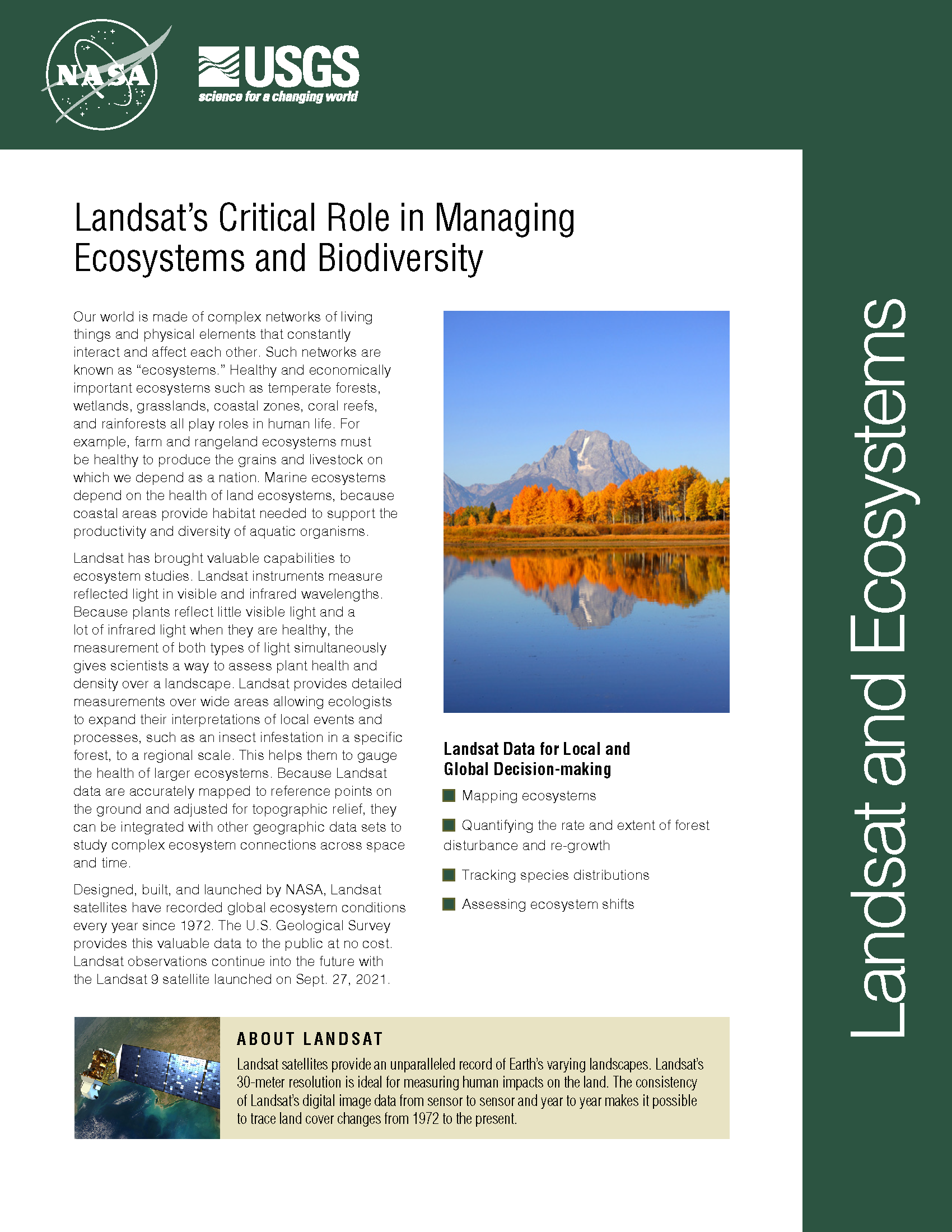Landsat’s Role in Managing Ecosystems and Biodiversity
Our world is made of complex networks of living things and physical elements that constantly interact and affect each other. Such networks are known as “ecosystems.” Healthy and economically important ecosystems such as temperate forests, wetlands, grasslands, coastal zones, coral reefs, and rainforests all play roles in human life. For example, farm and rangeland ecosystems must be healthy to produce the grains and livestock on which we depend as a nation. Marine ecosystems depend on the health of land ecosystems, because coastal areas provide habitat needed to support the productivity and diversity of aquatic organisms. Landsat has brought valuable capabilities to ecosystem studies. Landsat instruments measure reflected light in visible and infrared wavelengths. Because plants reflect little visible light and a lot of infrared light when they are healthy, the measurement of both types of light simultaneously gives scientists a way to assess plant health and density over a landscape. Measurements are detailed enough while still covering a wide area that ecologists can expand their interpretations of local events and processes, such as an insect infestation in a specific forest, to a regional scale. This helps them to gauge the health of larger ecosystems. Because Landsat data are accurately mapped to reference points on the ground and adjusted for topographic relief, they can be integrated with other geographic data sets and models to explore more complex studies of ecosystems and biodiversity across space and time.
Scientists Map Penguins From Space with Landsat
Source: Athena Dinar & Linda Capper, British Antarctic Survey Penguin poo (guano) stains, visible from space, have helped British scientists locate emperor penguin breeding colonies in Antarctica. Knowing their location
Landsat Used to Map Persian Gulf Coral Reefs
Contributor: Rashmi De Roy, World Wildlife Foundation In 2006, the WWF helped prepare the first map of coral habitats in the southeastern Persian Gulf, highlighting some of the most extensive
Tracking Biodiversity in the Amazon Rain Forests
Source: Lance Nixon, South Dakota State University NASA is paying researchers on the cool prairies of South Dakota to help track biodiversity in the steamy rain forests of the Brazilian
Landsat, Potholes, and Climate Change
Contributor: Laura E.P. Rocchio What could Landsat, potholes, and climate change have in common? Well—when you use the term “potholes” to refer to the glacially-formed wetland depressions of the Prairie
Landsat Important to Coastal Studies
Contributor: Laura E.P. Rocchio When you think of Landsat, images of the Earth’s land surface rightly come to mind because that is the type of imagery that Landsat was designed
An Earth Day Perspective: NASA Satellites Aid in Chesapeake Bay Recovery
Contact: Andrew Freeberg From the distant reaches of the universe, to black holes and Saturn’s rings, NASA explores some of the most far-out parts of space. But NASA also does


